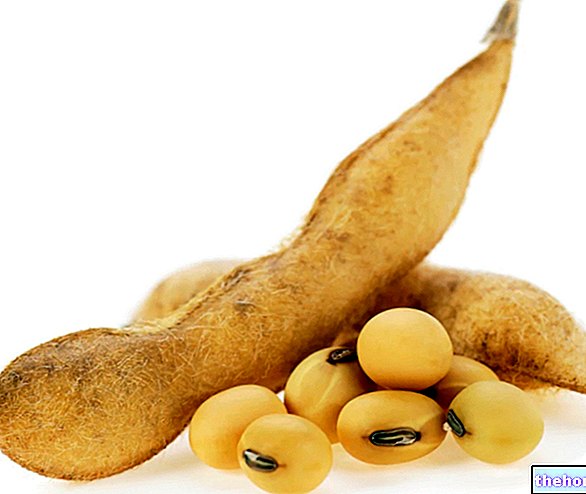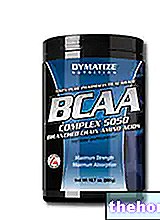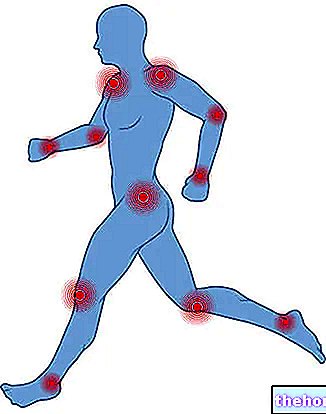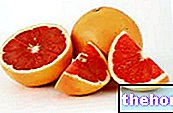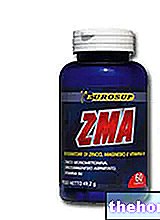
About ZMA HP - EAS
ZMA HP - EAS
Food supplement based on zinc, magnesium and vitamin B6 with N-acetyl cysteine
FORMAT
Pack of 120 tablets
COMPOSITION
Zinc monomethionine
Zinc / Magnesium aspartate
Vitamin B6 - pyridoxine HCl
Dibasic calcium phosphate
Ascorbic acid (Vitamin C)
N-acetyl L-cysteine
DL - alpha tocopherol acetate (Vitamin E)
Stabilizer: microcrystalline cellulose
Anti-caking agents: magnesium stearate and silicon dioxide
Dyes: E171, E172, E555
For three tablets: Magnesium - 450 mg; Zinc - 22.5 mg; Vitamin B6 - 3mg; Vitamin C - 120 mg; Vitamin E - 20 mg; N-acetyl l-cysteine - 200 mg
Product features ZMA HP - EAS
ZMA - born as a product capable of increasing the secretion of anabolic hormones and assisting the muscle growth phase. The patented form combines two important trace elements, such as zinc and magnesium in the most bioavailable forms, with vitamin B6. The intent of this supplement is to replicate and enhance the effects demonstrated for the individual elements:
- Zinc: trace element involved in the protection from oxidative damage, in the modulation of hormonal function, in the regulation of cell survival and in various other reactions; it seems to play an important role also in physical activity. Several studies have in fact shown how the urinary excretion of this element is significantly elevated following intense physical exercise, accompanied by an important decrease in muscular ergogenic capacities. At the same time it seems that supplementation with 3 mg / kg / day of zinc can, in these cases, support muscle growth, saving the drop in testosterone and other hormones.
The most bioavailable form is that associated with methionine, which is found in products of animal origin.
- Magnesium: a central trace element in the maintenance of organic homeostasis. In fact, it is part of more than 300 reactions, participating both in the glucose catabolism, necessary to support the muscular energy capacities, and in the anabolic phase, allowing the synthesis of various macromolecules, as well as in the structural and The magnesium also guarantees the correct deposition of the bone matrix and regulates the excitatory and contractile capacities of the muscles.
As for zinc, several studies have shown how the need for magnesium can increase by 10/20% in athletes, given the amount eliminated through the urine following physical exercise, and how its deficiency can be responsible for an increase in oxidative damage induced by intense physical activity, a condition of immunosuppression and a reduction in contractile efficacy. At the same time, its supplementation has been shown to improve aerobic (increasing hemoglobin levels), metabolic-energy (improving glucose oxidation and reducing lactate formation), and anabolic (increasing testosterone levels) capacities.
- Vitamin B6: introduced in the form of pyridoxine, it undergoes a series of enzymatic transformations, mainly in the liver, which activate it in the form of pyridoxal phosphate. Distributed to various tissues, it will re-enter as a coenzyme in various biological pathways:
Glucose metabolism: gluconeogenesis and glycogenolysis;
Neurotransmitter synthesis: it is part of the synthesis of serotonin;
Maintenance of erythrocyte functionality: it is included as a coenzyme in the synthesis of the EME group;
Control of hormonal activity;
Synthesis of nucleic acids; .
the LARN suggest the intake of 1.1 mg of vitamin B6 for women and 1.5 mg for men, which can be easily satisfied with a balanced diet containing products of animal origin.
Rationale - ZMA HP - EAS
The objective for which this supplement was born was achieved exclusively in an unpublished study, in which there was an increase in some anabolic hormones such as testosterone and IGF-1, but promptly denied by subsequent studies, which reproducing the same conditions, on a larger sample of athletes, could not describe any benefit.
The inability of ZMA to replicate at least the results obtained from the separate administration of the individual elements, could be deduced from a published study that shows how the administration of zinc, albeit at high levels, can interfere with that of magnesium and deregulate the ratio of magnesium absorbed and magnesium excreted.
N-Acetyl L Cysteine:acetylated form of cysteine. The acetylation of this sulphured amino acid significantly improves its pharmacokinetic properties, facilitating intestinal absorption and reducing the competitiveness that occurs instead for the "food" form. Cysteine represents the limiting amino acid in the synthesis of a very important tripeptide, known as glutathione, which is essential in countering the harmful action of oxidizing substances. Physical exercise, including aerobic one, is responsible for the production of reactive oxygen species, which could easily react with cellular structures, damaging them and seriously compromising their functionality. NAC has been shown to be effective in increasing glutathione levels, and in contrasting, in synergy with other antioxidants, the oxidative damage induced by intense physical exercise.
C vitamin - water-soluble vitamin, very abundant in nature, mainly present in products of plant origin. Absorbed in the intestine, vitamin C is found in a labile form in the plasma and in a stable form in the tissues, the quantity of which is inevitably affected by the amount of blood.
Its biological activity is expressed as:
- powerful antioxidant, through the regeneration of vitamin E;
- enzymatic cofactor in hydroxylation processes, important for example for the synthesis of collagen, catecholamines and numerous other hormones;
- reducing intestinal iron, with a consequent increase in absorption levels;
- reducing folic acid in its related coenzymatic forms.
As already mentioned for NAC, the ability of vitamin C is particularly important, especially when combined with other antioxidants, to counteract the oxidative damage induced by intense physical exercise. This has an immediate impact on the performance, and in the long run on the recovery potential of the organism, and in particular of the muscle, which is the tissue most affected by this process.
Its daily requirement is estimated at around 60-90mg, but at only 10mg, it is able to prevent scurvy, a disease derived from vitamin C deficiency.
Vitamin E: introduced into the body through the diet (mainly through cold-pressed oils and oil seeds), being a fat-soluble vitamin, it is effectively absorbed in the intestine with the help of bile salts. Through the bloodstream, bound to lipoproteins, vitamin E is carried to the liver and subsequently sorted to the various tissues. The main biological role of this vitamin is the antioxidant, reducing the oxidation levels of polyunsaturated fatty acids, regenerating other antioxidant vitamins such as A and C, and at the same time modulating the activity of cyclooxygenase and lipoxygenase, thus reducing the levels of prostanoids responsible for platelet aggregation and associated atherosclerotic disorders. As you can easily imagine, the powerful antioxidant role of vitamin E represents a precious ally in sports, saving the muscle from the oxidative damage induced by intense physical exercise, and supporting not only performance, but above all the subsequent recovery phase. Vitamin has been shown to be effective in the protection of various competitive athletes, at very different dosages, which can far exceed those recommended by LARN.
In the supplementary protocols for athletes, dosages of around 300 mg / day and higher are described.
Deficiency states are very rare in healthy subjects, while in pathological conditions they are generally associated with neurological deficits.
The toxic effects also seem to be of little relevance; exceeded 2000 mg / day, intestinal problems become evident
Method of use recommended by the company - ZMA HP - EAS
Take 4 tablets before bedtime.
Method of use in sports practice - ZMA HP - EAS
It is very complex to suggest an alternative dosage to that indicated by the manufacturer, as there are no studies in the literature that associate the various products indicated above.
However, if the dosage of ZMA seems to be close to that used in the only study that reports advantages relating to its use, that of NAC seems rather distant, whose antioxidant properties are expressed at dosages equal to over 600mg.
The association of these various elements makes the timing of intake somewhat complex and contradictory, which would be preferable on an empty stomach for NAC and ZMA, on a full stomach for vitamin E. Also for this reason, it remains difficult to define an additional protocol .
ZMA HP side effects - EAS
Zinc: high amounts of zinc introduced are responsible for abdominal pain, diarrhea, nausea and vomiting. Chronic zinc administration (60 mg / day total) is associated with copper deficiency.
Magnesium: high amounts of magnesium are responsible for profuse diarrhea. The increase in serum magnesium levels is instead associated with hypotension, confusion, heart rhythm disturbances, deterioration of renal function, fatigue, breathing difficulties, even cardiac arrest. The safe supplementation dose seems to be 350mg / die.
Vitamin B6: chronic administration can be responsible for damage to the nervous system and neuropathies of various levels already at doses above 200mg / day.
NAC: no particular side effects of oral supplementation with NAC have been recorded, even for prolonged periods. However, close medical supervision is necessary in the case of asthmatic individuals, with respiratory tract diseases or with gastrointestinal tract diseases.
Vitamin C: side effects characterized by gastrointestinal disorders due to the acidity of this vitamin, are recorded for pharmacological dosages, ie higher than 10 gr / day.
Vitamin E: the tolerated daily dose seems to be that of 1 gr / day (1500 IU), beyond which gastro-intestinal problems could occur.
ZMA HP - EAS interactions
Zinc: in addition to interfering with other trace elements such as copper, it could reduce the absorption of some antibiotics such as tetracyclines, reducing their effectiveness.
Magnesium: may interfere with some antibiotics, tranquilizers and oral anticoagulants, reducing their effectiveness.
Precautions for use ZMA HP - EAS
The product is contraindicated in cases of renal or hepatic pathology, cardiovascular disease and / or hypertension, during pregnancy, during lactation and under 14 years.
This article, elaborated on the critical rereading of scientific articles, university texts and common practice, is for information purposes only and therefore has no medical prescription value. It is therefore always required to consult your doctor, nutritionist or pharmacist before undertaking the use of any supplement.. Learn more about the critical analysis of ZMA HP - EAS.
Serum testosterone and urinary excretion of steroid hormone metabolites after administration of a high-dose zinc supplement.
Koehler K, Parr MK, Geyer H, Mester J, Schänzer W.
Eur J Clin Nutr. 2009 Jan; 63: 65-70. Epub 2007 Sep 19.
Effects of Zinc Magnesium Aspartate (ZMA) Supplementation on Training Adaptations and Markers of Anabolism and Catabolism.
Wilborn CD, Kerksick CM, Campbell BI, Taylor LW, Marcello BM, Rasmussen CJ, Greenwood MC, Almada A, Kreider RB.
J Int Soc Sports Nutr. 2004 Dec 31; 1: 12-20
Effect of fatiguing bicycle exercise on thyroid hormone and testosterone levels in sedentary males supplemented with oral zinc.
Kilic M.
Neuro Endocrinol Lett. 2007 Oct; 28: 681-5.
The effect of exhaustion exercise on thyroid hormones and testosterone levels of elite athletes receiving oral zinc.
Kilic M, Baltaci AK, Gunay M, Gökbel H, Okudan N, Cicioglu I.
Neuro Endocrinol Lett. 2006 Feb-Apr; 27 (1-2): 247-52.
Zinc supplementation in rats subjected to acute swimming exercise: Its effect on testosterone levels and relation with lactate.
Kaya O, Gokdemir K, Kilic M, Baltaci AK.
Neuro Endocrinol Lett. 2006 Feb-Apr; 27 (1-2): 267-70.
Neuroendocrine responses to running in women after zinc and vitamin E supplementation.
Singh A, Papanicolaou DA, Lawrence LL, Howell EA, Chrousos GP, Deuster PA.
Vitamin and mineral status of trained athletes including the effects of supplementation.
Weight LM, Noakes TD, Labadarios D, Graves J, Jacobs P, Berman PA.
Am J Clin Nutr. 1988 Feb; 47: 186-91.
Effects of Magnesium Supplementation on Testosterone Levels of Athletes and Sedentary Subjects at Rest and after Exhaustion.
Cinar V, Polat Y, Baltaci AK, Mogulkoc R.
Biol Trace Elem Res. 2010 Mar 30. [Epub ahead of print]
The effects of magnesium supplementation on thyroid hormones of sedentars and Tae-Kwon-Do sportsperson at resting and exhaustion.
Cinar V.
Neuro Endocrinol Lett. 2007 Oct; 28: 708-12.
Update on the relationship between magnesium and exercise.
Nielsen FH, Lukaski HC.
Magnes Res. 2006 Sep; 19: 180-9. Review.
Magnesium sulfate enhances exercise performance and manipulates dynamic changes in peripheral glucose utilization.
Cheng SM, Yang LL, Chen SH, Hsu MH, Chen IJ, Cheng FC.
Eur J Appl Physiol. 2010 Jan; 108: 363-9. Epub 2009 Oct 9.
Magnesium sulfate enhances exercise performance and manipulates dynamic changes in peripheral glucose utilization.
Cheng SM, Yang LL, Chen SH, Hsu MH, Chen IJ, Cheng FC.
Eur J Appl Physiol. 2010 Jan; 108: 363-9. Epub 2009 Oct 9.
The effect of magnesium supplementation on lactate levels of sportsmen and sedanter.
Cinar V, Nizamlioğlu M, Moğulkoc R.
Acta Physiol Hung. 2006 Jun; 93 (2-3): 137-44.
Acta Physiol Hung. 2006 Jun; 93 (2-3): 137-44.
The antioxidant role of glutathione and N-acetyl-cysteine supplements and exercise-induced oxidative stress.
Kerksick C, Willoughby D.
J Int Soc Sports Nutr. 2005 Dec 9; 2: 38-44.
Modulatory effect of N-acetylcysteine on pro-antioxidant status and haematological response in healthy men.
Zembron-Lacny A, Slowinska-Lisowska M, Szygula Z, Witkowski Z, Szyszka K.
J Physiol Biochem. 2010 Mar 31. [Epub ahead of print]

